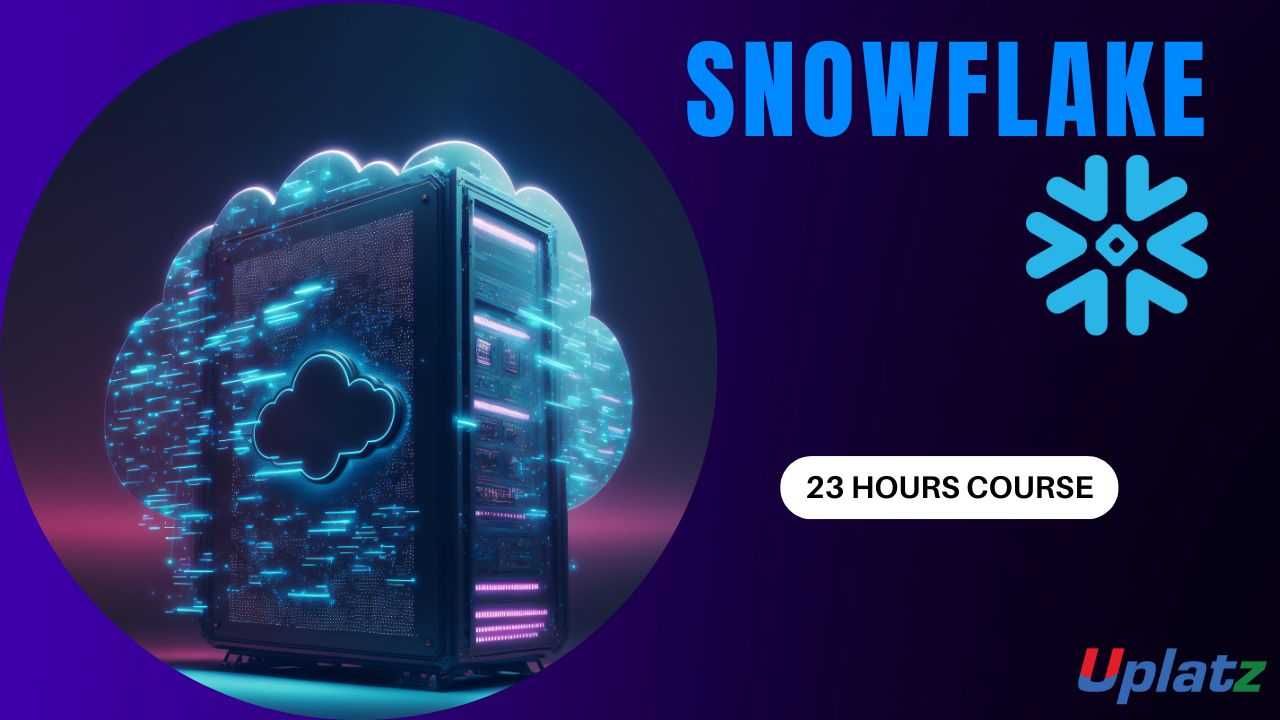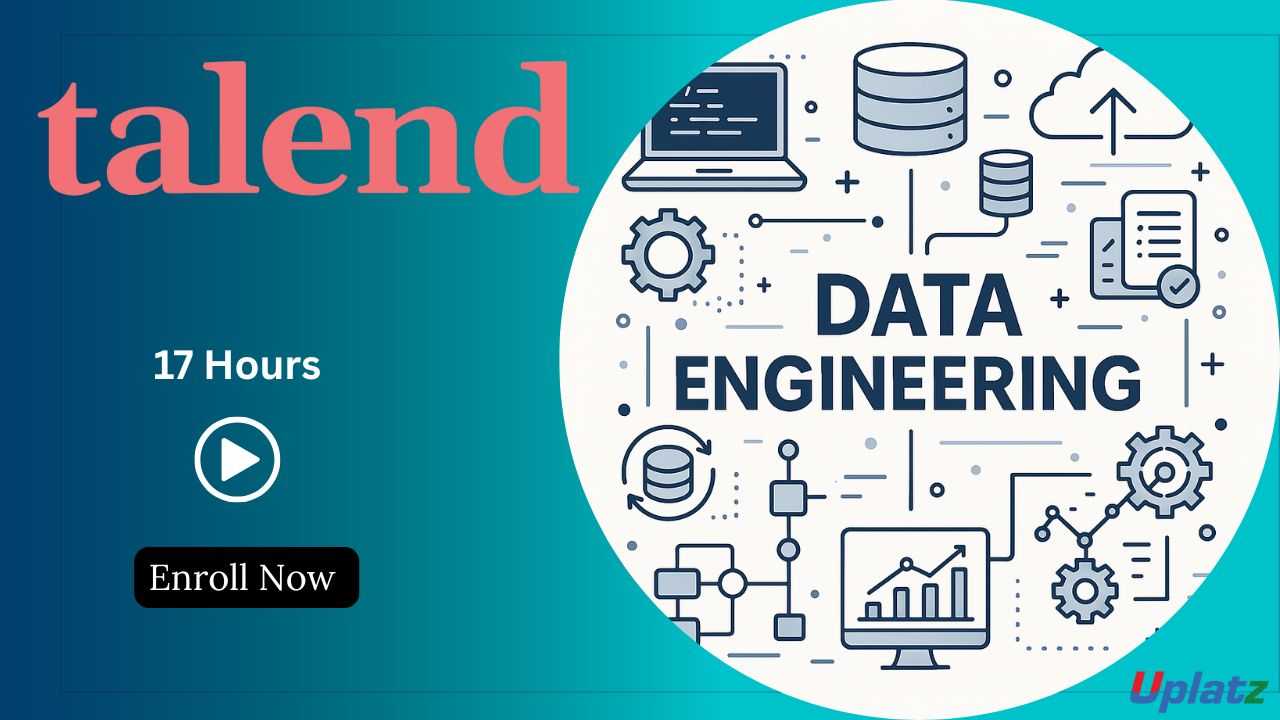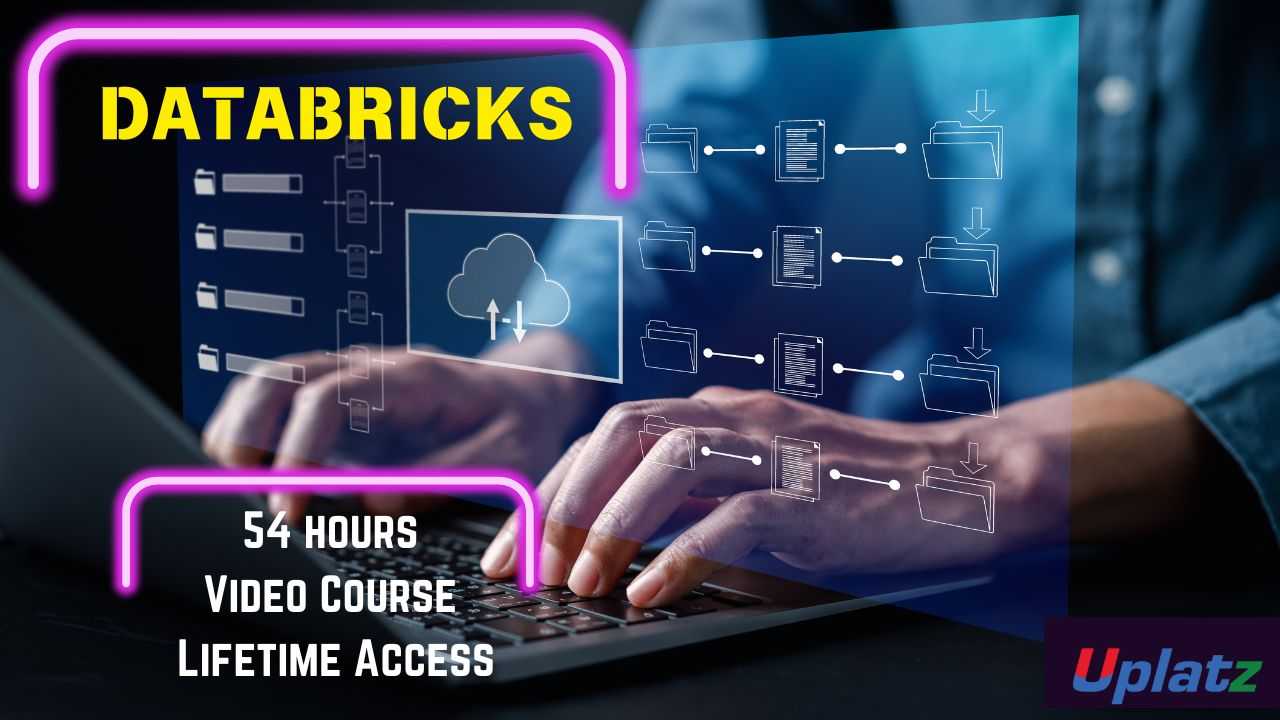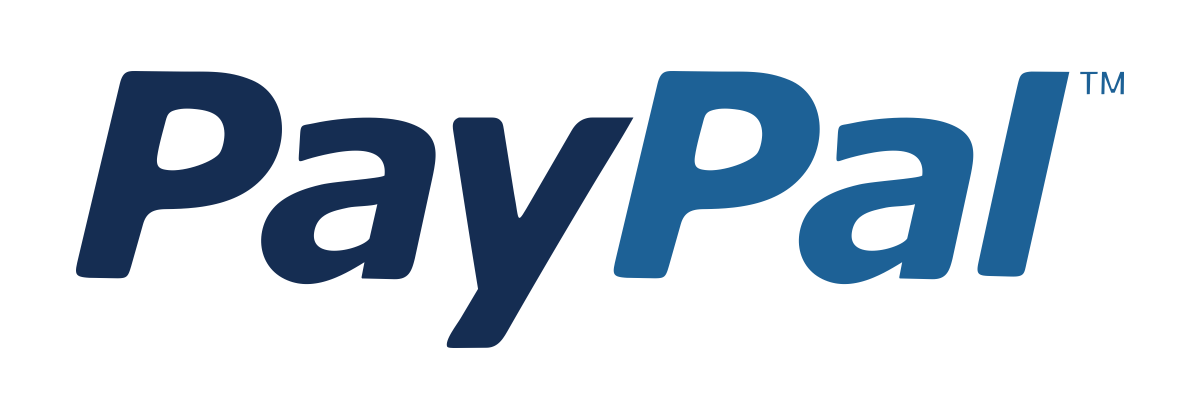Apache Spark and PySpark
Master big data processing with Spark and PySpark — from fundamentals to building production-grade ETL workflows and analytics pipelines.Preview Apache Spark and PySpark course
Price Match Guarantee Full Lifetime Access Access on any Device Technical Support Secure Checkout Course Completion Certificate 95% Started a new career
BUY THIS COURSE (
95% Started a new career
BUY THIS COURSE (GBP 12 GBP 29 )-
 89% Got a pay increase and promotion
89% Got a pay increase and promotion
Students also bought -
-

- Snowflake for Business Intelligence and Analytics Professionals
- 23 Hours
- GBP 12
- 3789 Learners
-

- Data Engineering with Talend
- 17 Hours
- GBP 12
- 540 Learners
-

- Databricks for Cloud Data Engineering
- 54 Hours
- GBP 12
- 1379 Learners

About the Course: Apache Spark & PySpark Essentials – Self-Paced Online Course
Step into the world of big data with confidence through the Apache Spark & PySpark Essentials self-paced online course, designed to provide you with a powerful entry point into the fast-growing fields of data engineering and real-time analytics. This course offers a thorough introduction to two of the most critical technologies in the data processing ecosystem—Apache Spark and PySpark—giving you the technical foundation and practical expertise to process large-scale data with speed, reliability, and efficiency.
Offered as a flexible, self-paced training program, this course is delivered via high-quality pre-recorded video sessions that cover both theoretical foundations and real-world applications. The content is carefully structured to walk you through essential concepts, interactive coding examples, and project-driven exercises. Upon successful completion, you will receive a Course Completion Certificate from Uplatz, showcasing your competency in Spark and PySpark fundamentals.
Whether you're a student looking to break into data engineering, a Python developer aiming to scale your data processing skills, or a working professional transitioning into a data-centric role, this course offers the knowledge, tools, and practice to help you thrive in today’s data-driven world.
Why Apache Spark and PySpark?
Apache Spark has become the de facto standard for big data processing due to its ability to handle vast datasets across distributed computing environments. Its in-memory processing engine dramatically boosts performance compared to traditional Hadoop MapReduce, and its ecosystem includes modules for SQL, streaming, machine learning, and graph processing. It is widely adopted in industries ranging from finance and healthcare to retail and technology.
PySpark, the Python API for Apache Spark, enables Python developers to harness the full power of Spark’s distributed architecture. With PySpark, you can perform sophisticated data operations, build machine learning models, manage real-time data streams, and integrate seamlessly with tools like Hadoop, Hive, and HDFS—all while using the familiar syntax and libraries of Python.
This course is designed to demystify these technologies by guiding you through core Spark concepts like Resilient Distributed Datasets (RDDs), DataFrames, Spark SQL, and distributed computing fundamentals. You will learn how to write optimized PySpark code, transform and analyze datasets, and build scalable data pipelines from scratch.
Who Should Take This Course?
This course is ideal for:
- Aspiring Data Engineers who want to build efficient data pipelines and work with distributed data systems.
- Python Developers looking to extend their skills into the world of big data and distributed computing.
- Data Analysts and Data Scientists who need to process and analyze large datasets using a scalable framework.
- Software Engineers and Backend Developers involved in building data-intensive applications.
- Students and Career Changers who want to enter the field of big data and analytics with a strong technical foundation.
No matter your background, this course equips you with industry-relevant skills and practical exposure to big data tools, setting the stage for advanced learning and real-world applications.
What Makes This Course Unique?
Unlike generic tutorials that offer superficial coverage, this course provides deep, hands-on learning of Apache Spark and PySpark from both a conceptual and technical standpoint. The material goes beyond textbook definitions to include code walkthroughs, real-time data processing examples, performance tuning techniques, and integration with common big data platforms like Hadoop and Hive.
With a balanced blend of theory and practice, this course ensures that you don’t just learn Spark—you learn how to apply it. The project-based approach allows you to experiment, make mistakes, and build a working portfolio of skills that will be valuable in job interviews, technical assessments, and on-the-job scenarios.
How to Use This Course Effectively
To make the most of this self-paced training experience, it’s essential to approach the course with a focused and hands-on mindset. Here’s how to optimize your learning journey:
1. Prepare Your Environment Early
Before starting, install Apache Spark and configure PySpark in your local machine or use a cloud-based platform like Databricks or Google Colab. Ensure Python is installed, and familiarize yourself with tools like Jupyter Notebook or your preferred IDE. Having this setup ready will allow you to start coding immediately and follow along with the course examples without interruption.
2. Follow the Course in Sequential Order
The course content is structured to build progressively, starting with the fundamentals and advancing to more complex topics. Avoid skipping ahead, especially in the beginning. Concepts such as RDDs, transformations, and actions lay the groundwork for understanding DataFrames and Spark SQL later on.
3. Code Along with the Instructor
This is not a passive course. Actively write and execute every line of code shown in the videos. Modify examples, experiment with your own datasets, and debug errors on your own. This trial-and-error process will deepen your understanding and improve your problem-solving abilities.
4. Take Notes and Bookmark Key Topics
As you progress, document important commands, functions, and configurations. Create a personal reference sheet that includes commonly used operations like joins, aggregations, caching, and performance tuning. This will serve as a useful guide when working on real projects or during technical interviews.
5. Engage in Projects and Assignments
Try to complete all coding exercises and mini-projects provided throughout the course. Then challenge yourself by creating your own Spark projects, such as ETL pipelines or streaming data applications. These projects will enhance your resume and demonstrate your practical skills to potential employers.
6. Leverage the Rewind Option
If you find certain topics—such as Spark’s execution model, lazy evaluation, or partitioning—challenging, don’t hesitate to pause and rewatch those segments. Revisiting complex ideas multiple times helps reinforce learning and ensures clarity.
7. Explore Supplementary Resources
While the course provides comprehensive coverage, take time to explore the official Apache Spark documentation and PySpark API references. These resources are invaluable for mastering syntax, troubleshooting, and keeping up with updates.
8. Earn and Showcase Your Certificate
After successfully completing the course, download your Uplatz Course Completion Certificate. Share it on your LinkedIn profile, resume, or personal website to demonstrate your commitment to learning and your expertise in Spark and PySpark.
Begin Your Big Data Journey Today
The Apache Spark & PySpark Essentials course is more than just a learning module—it's a launchpad for a thriving career in big data and analytics. By the end of this course, you’ll be equipped to build scalable data applications, process huge volumes of data in real-time, and transition into roles such as Data Engineer, Big Data Developer, or Analytics Engineer.
Mastering Apache Spark and PySpark opens the door to high-demand opportunities in one of the most transformative sectors in tech. Whether you’re looking to upskill, reskill, or simply explore a new domain, this self-paced course is the perfect place to begin.
Enroll now and spark your future in big data.
Course/Topic 1 - Course access through Google Drive
-
Google Drive
-
Google Drive
By the end of this course, learners will be able to:
- Understand Big Data fundamentals and the need for distributed data processing.
- Learn the Apache Spark architecture, including driver, executors, DAG, and cluster modes.
- Master RDDs and DataFrames, and how to manipulate data efficiently in memory.
- Use PySpark to build scalable data pipelines using Python.
- Perform data transformations and actions using Spark's core APIs.
- Work with Spark SQL to query structured data using SQL-like syntax.
- Integrate Spark with HDFS, Hive, and other data sources for data ingestion and processing.
- Explore Spark MLlib for scalable machine learning workflows.
- Build and manage ETL pipelines and understand Spark’s role in modern data engineering.
- Optimize Spark jobs with caching, partitioning, and tuning techniques.
Apache Spark and PySpark Essentials for Data Engineering - Course Syllabus
This course is designed to provide a comprehensive understanding of Spark and PySpark, from basic concepts to advanced implementations, to ensure you well-prepared to handle large-scale data analytics in the real world. The course includes a balance of theory, hands-on practice including project work.
- Introduction to Apache Spark
- Introduction to Big Data and Apache Spark, Overview of Big Data
- Evolution of Spark: From Hadoop to Spark
- Spark Architecture Overview
- Key Components of Spark: RDDs, DataFrames, and Datasets
- Installation and Setup
- Setting Up Spark in Local Mode (Standalone)
- Introduction to the Spark Shell (Scala & Python)
- Basics of PySpark
- Introduction to PySpark: Python API for Spark
- PySpark Installation and Configuration
- Writing and Running Your First PySpark Program
- Understanding RDDs (Resilient Distributed Datasets)
- RDD Concepts: Creation, Transformations, and Actions
- RDD Operations: Map, Filter, Reduce, GroupBy, etc.
- Persisting and Caching RDDs
- Introduction to SparkContext and SparkSession
- SparkContext vs. SparkSession: Roles and Responsibilities
- Creating and Managing SparkSessions in PySpark
- Working with DataFrames and SparkSQL
- Introduction to DataFrames
- Understanding DataFrames: Schema, Rows, and Columns
- Creating DataFrames from Various Data Sources (CSV, JSON, Parquet, etc.)
- Basic DataFrame Operations: Select, Filter, GroupBy, etc.
- Advanced DataFrame Operations
- Joins, Aggregations, and Window Functions
- Handling Missing Data and Data Cleaning in PySpark
- Optimizing DataFrame Operations
- Introduction to SparkSQL
- Basics of SparkSQL: Running SQL Queries on DataFrames
- Using SQL and DataFrame API Together
- Creating and Managing Temporary Views and Global Views
- Data Sources and Formats
- Working with Different File Formats: Parquet, ORC, Avro, etc.
- Reading and Writing Data in Various Formats
- Data Partitioning and Bucketing
- Hands-on Session: Building a Data Pipeline
- Designing and Implementing a Data Ingestion Pipeline
- Performing Data Transformations and Aggregations
- Introduction to Spark Streaming
- Overview of Real-Time Data Processing
- Introduction to Spark Streaming: Architecture and Basics
- Advanced Spark Concepts and Optimization
- Understanding Spark Internals
- Spark Execution Model: Jobs, Stages, and Tasks
- DAG (Directed Acyclic Graph) and Catalyst Optimizer
- Understanding Shuffle Operations
- Performance Tuning and Optimization
- Introduction to Spark Configurations and Parameters
- Memory Management and Garbage Collection in Spark
- Techniques for Performance Tuning: Caching, Partitioning, and Broadcasting
- Working with Datasets
- Introduction to Spark Datasets: Type Safety and Performance
- Converting between RDDs, DataFrames, and Datasets
- Advanced SparkSQL
- Query Optimization Techniques in SparkSQL
- UDFs (User-Defined Functions) and UDAFs (User-Defined Aggregate Functions)
- Using SQL Functions in DataFrames
- Introduction to Spark MLlib
- Overview of Spark MLlib: Machine Learning with Spark
- Working with ML Pipelines: Transformers and Estimators
- Basic Machine Learning Algorithms: Linear Regression, Logistic Regression, etc.
- Hands-on Session: Machine Learning with Spark MLlib
- Implementing a Machine Learning Model in PySpark
- Hyperparameter Tuning and Model Evaluation
- Hands-on Exercises and Project Work
- Optimization Techniques in Practice
- Extending the Mini-Project with MLlib
- Real-Time Data Processing and Advanced Streaming
- Advanced Spark Streaming Concepts
- Structured Streaming: Continuous Processing Model
- Windowed Operations and Stateful Streaming
- Handling Late Data and Event Time Processing
- Integration with Kafka
- Introduction to Apache Kafka: Basics and Use Cases
- Integrating Spark with Kafka for Real-Time Data Ingestion
- Processing Streaming Data from Kafka in PySpark
- Fault Tolerance and Checkpointing
- Ensuring Fault Tolerance in Streaming Applications
- Implementing Checkpointing and State Management
- Handling Failures and Recovering Streaming Applications
- Spark Streaming in Production
- Best Practices for Deploying Spark Streaming Applications
- Monitoring and Troubleshooting Streaming Jobs
- Scaling Spark Streaming Applications
- Hands-on Session: Real-Time Data Processing Pipeline
- Designing and Implementing a Real-Time Data Pipeline
- Working with Streaming Data from Multiple Sources
- Capstone Project - Building an End-to-End Data Pipeline
- Project Introduction
- Overview of Capstone Project: End-to-End Big Data Pipeline
- Defining the Problem Statement and Data Sources
- Data Ingestion and Preprocessing
- Designing Data Ingestion Pipelines for Batch and Streaming Data
- Implementing Data Cleaning and Transformation Workflows
- Data Storage and Management
- Storing Processed Data in HDFS, Hive, or Other Data Stores
- Managing Data Partitions and Buckets for Performance
- Data Analytics and Machine Learning
- Performing Exploratory Data Analysis (EDA) on Processed Data
- Building and Deploying Machine Learning Models
- Real-Time Data Processing
- Implementing Real-Time Data Processing with Structured Streaming
- Integrating Streaming Data with Machine Learning Models
- Performance Tuning and Optimization
- Optimizing the Entire Data Pipeline for Performance
- Ensuring Scalability and Fault Tolerance
- Industry Use Cases and Career Preparation
- Industry Use Cases of Spark and PySpark
- Discussing Real-World Applications of Spark in Various Industries
- Case Studies on Big Data Analytics using Spark
- Interview Preparation and Resume Building
- Preparing for Technical Interviews on Spark and PySpark
- Building a Strong Resume with Big Data Skills
- Final Project Preparation
- Presenting the Capstone Project for Resume and Instructions help
After successfully completing the Apache Spark & PySpark Essentials for Data Engineering course, learners will receive a Course Completion Certificate from Uplatz, validating their expertise in distributed data processing and Python-based big data development.
This certification highlights your skills in high-demand technologies used in data engineering, ETL development, and real-time analytics, and prepares you for further certifications in Spark or cloud-based data engineering tracks.
Proficiency in Spark and PySpark is a must-have for modern data engineering roles. This course unlocks several career paths, including:
- Data Engineer
- Big Data Developer
- Spark Developer
- ETL Engineer
- Data Analyst (Big Data)
- Machine Learning Engineer (Spark MLlib)
Industries such as finance, retail, healthcare, tech, media, and telecom use Spark for large-scale data analysis, streaming, and batch processing—creating continuous demand for Spark-skilled professionals.
1. What is Apache Spark and how does it differ from Hadoop?
Apache Spark is a distributed data processing engine that offers in-memory computation for faster analytics, unlike Hadoop’s MapReduce, which relies on disk I/O.
2. What are RDDs in Spark?
RDDs (Resilient Distributed Datasets) are the fundamental data structure in Spark, representing immutable distributed collections of objects that can be processed in parallel.
3. What is PySpark?
PySpark is the Python API for Apache Spark, allowing users to write Spark applications using Python.
4. What is the difference between RDD and DataFrame?
RDD is low-level and gives full control, whereas DataFrame is a higher-level abstraction optimized for performance and is easier to use with SQL-like syntax.
5. How does Spark achieve fault tolerance?
Spark achieves fault tolerance through lineage information in RDDs, which allows it to recompute lost data without relying on data replication.
6. What is Spark SQL?
Spark SQL allows querying structured data using SQL-like commands. It integrates seamlessly with DataFrames and datasets.
7. How is data partitioned in Spark?
Spark partitions data based on keys, hash functions, or custom logic, allowing parallel processing across nodes in a cluster.
8. What is lazy evaluation in Spark?
Spark delays execution until an action is called. This optimization strategy allows Spark to build efficient execution plans.
9. How do you optimize a PySpark job?
Use techniques like broadcasting small datasets, caching/persisting data, tuning partition sizes, and minimizing data shuffles.
10. Can Spark handle streaming data?
Yes, using Spark Structured Streaming, Spark can process real-time data streams with fault tolerance and scalability.









